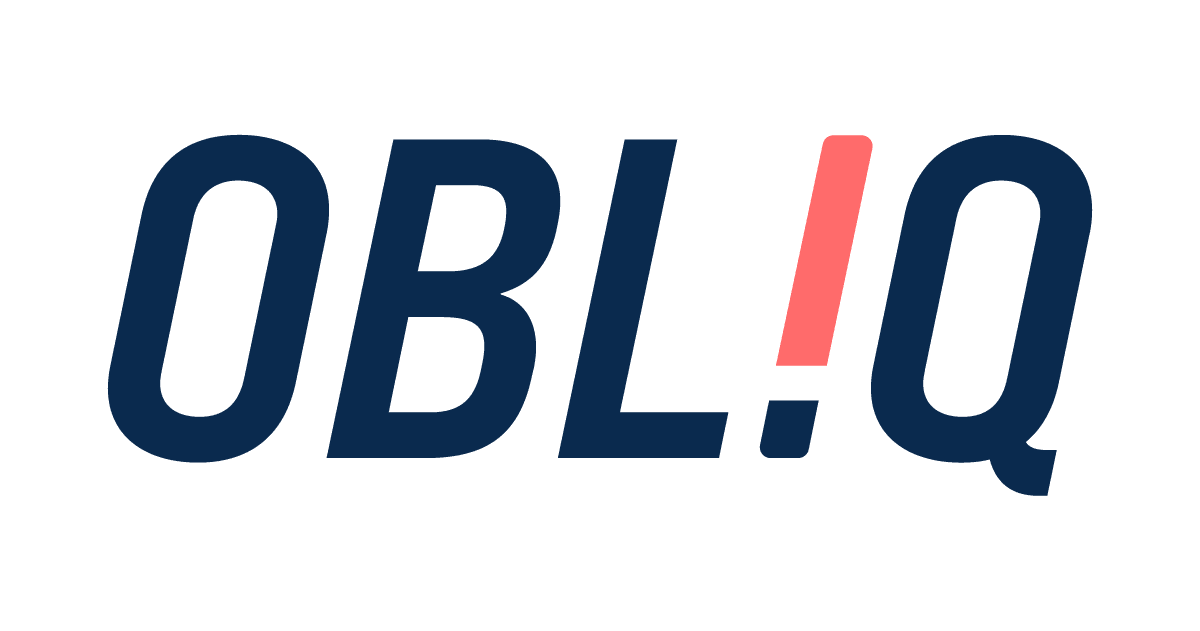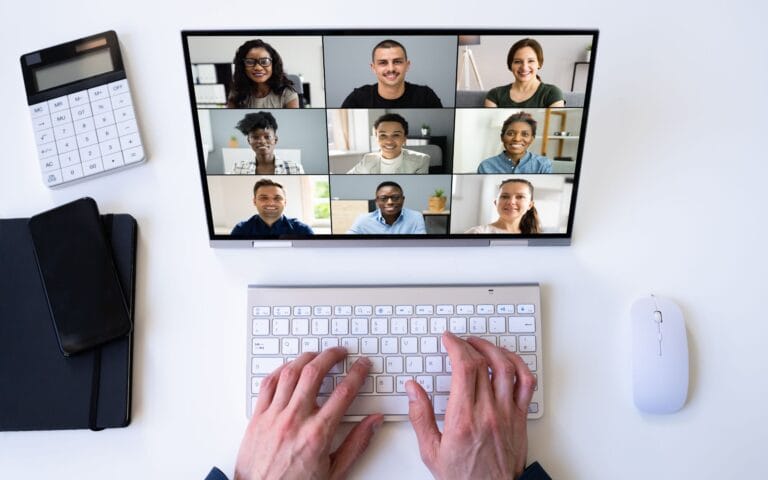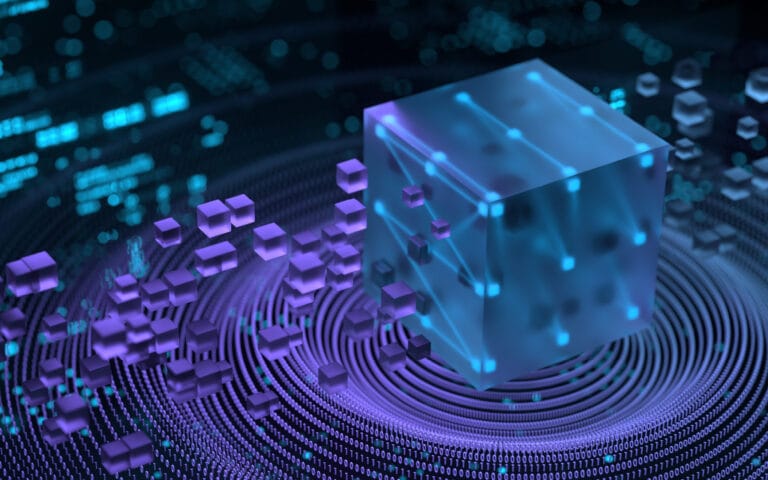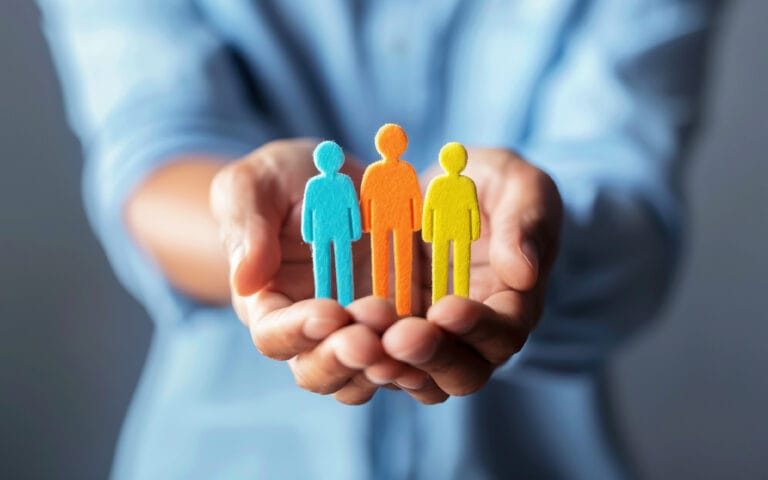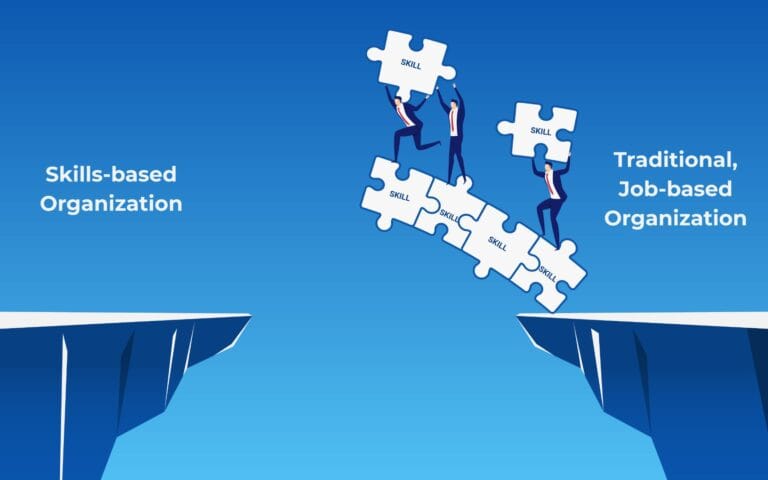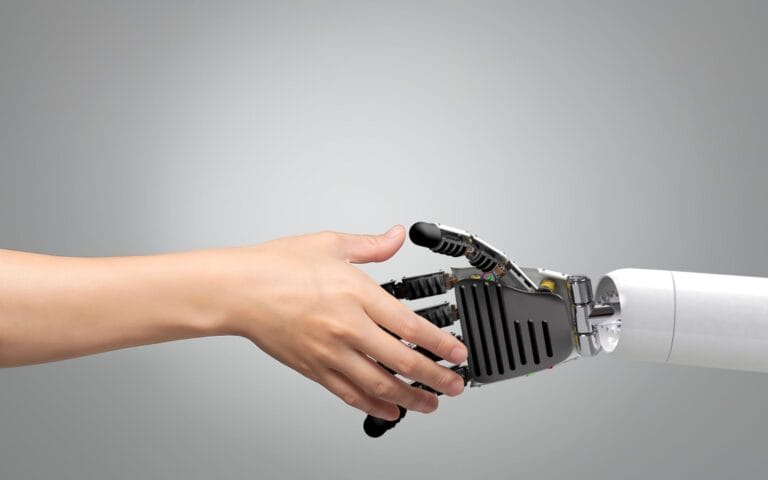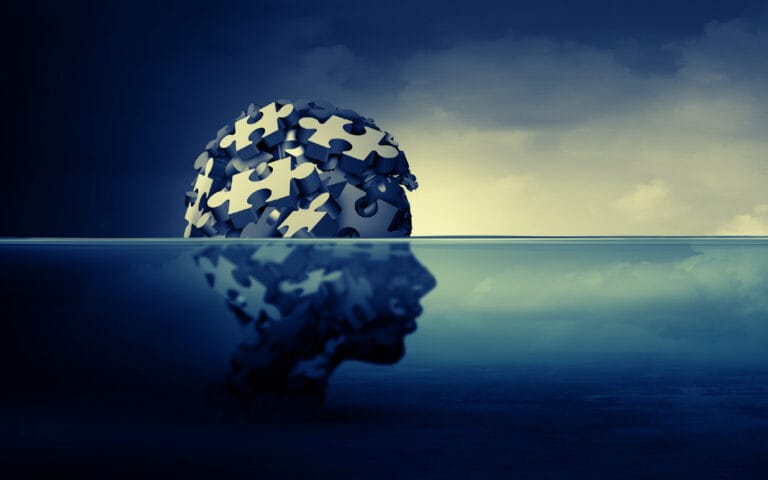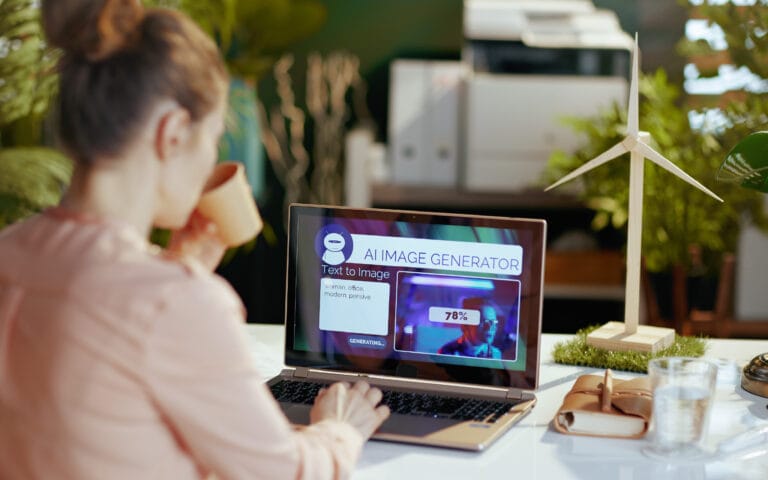The conversation around artificial intelligence in the workplace is rapidly evolving. The initial buzz, often tinged with anxiety about job replacement, is giving way to a more nuanced and powerful reality: AI is not here to replace us, but to augment us. It’s not a competitor for our jobs; it’s a new kind of colleague. This paradigm shift from AI as a tool to AI as a teammate is the single most important development in the modern workplace.
For managers and team leads, this isn’t just a technological shift; it’s a fundamental change in team design and leadership. The question is no longer if we will work with AI, but how we will work with it. How do we structure teams to leverage the best of both human and machine intelligence? How do we create a dynamic of human-AI collaboration that boosts productivity, sparks innovation, and ultimately, unlocks what’s next for our organizations?
This guide moves past the hype and provides a practical framework for designing, building, and leading the high-performing hybrid teams of the near future.
The success of integrating these AI co-workers will hinge less on the sheer technological prowess of the AI systems and more on the organization’s ability to cultivate genuine human-AI teaming literacy.
Meet Your New AI Teammate(s): Understanding the Landscape
Before we can design the future of teams, we need to understand the new players. AI in the workplace isn’t a single entity; it’s a diverse cast of collaborators with specialized skills.
From Generative Partners to Agentic Systems
Most of us are now familiar with Generative AI, the creative partner that can draft emails, write code, generate images, and analyze data. Think of it as an “inspiration partner,” capable of producing a multitude of ideas for humans to refine. This iterative feedback loop—where humans prompt, AI creates, and humans refine—is the cornerstone of modern AI in the workplace.
But the landscape is evolving toward even more autonomous systems:
- Agentic AI: These are specialized AI agents designed to autonomously address intricate challenges with minimal human intervention. They can automate entire workflows by making decisions, analyzing real-time data, and learning from outcomes.
- Multi-Agent Systems: Imagine a team of specialized AI agents working in concert. For a task like contract review, one agent might extract data, another identifies key clauses, a third compares it to standards, and a fourth summarizes the findings—all orchestrated seamlessly.
This shift from a single AI tool to a team of AI agents has profound implications for team design. It requires humans to move from being operators to being conductors, managing a symphony of specialized AI collaborators.
The Journey to a Hybrid Team
The relationship between humans and AI is not static. It's evolving through distinct stages, each with profound implications for team structure and the nature of human work.
Stage 1: Generative AI
AI acts as a creative and productive assistant for drafting content, analyzing data, and generating ideas in an iterative feedback loop with a human partner.
Human Role: Operator & Refiner
Stage 2: Agentic AI
AI agents gain autonomy to automate entire workflows, make decisions, and act on real-time data to achieve goals with minimal human intervention.
Human Role: Overseer & Handler
Stage 3: Multi-Agent Systems
A collection of specialized AI agents collaborates to tackle complex tasks, mimicking human teamwork. Their efforts are coordinated to produce a comprehensive result.
Human Role: Conductor & Orchestrator
Designing for Impact: Architecting High-Performing Human-AI Teams
Creating a high-performing hybrid team—what is often called “hybrid intelligence”—is not an accident. It’s a deliberate act of design built on a few core principles.
Find the Synergy Sweet Spot
Indiscriminately applying AI to every task is a recipe for frustration and failure. True synergy is found by strategically matching the task to the right resource—human, AI, or a combination of both. Research from MIT shows a clear pattern:
- When humans outperform AI: Collaboration is highly successful. Humans are adept at knowing when to trust the AI's input and when to rely on their own nuanced judgment.
- When AI outperforms humans: AI working alone is often the best approach. Human intervention can sometimes degrade performance in highly data-driven, pattern-recognition tasks.
- For creative and content-creation tasks: Human-AI combinations almost always perform best.
The first step in effective team design is a rigorous task analysis. Instead of asking, “Can an AI do this?” we must ask, “Should an AI do this, and in what configuration?”
The Blueprint for Hybrid Intelligence
Successful human-AI collaboration is built on a clear and intentional architecture.
- 1. Establish Clear, Shared Goals: Both human and AI "members" must be oriented toward the same outcome. For a customer service team, an AI might handle 80% of routine inquiries, while human agents manage complex, emotional cases. The shared goal is a high-quality, swift resolution for all customers.
- 2. Define Roles and Responsibilities: Clearly delineate which tasks are best for AI (repetitive, data-driven) and which demand human skills (strategic, creative, empathetic). This clarity prevents confusion and positions AI as a complementary asset.
- 3. Build Trust Through Transparency: Trust is the bedrock of collaboration. Humans need a basic understanding of how the AI works and its limitations. "Explainability"—the ability of an AI to show how it reached a conclusion—is crucial. Leaders must communicate the 'why' behind AI adoption to foster this trust.
The Complementary Strengths of Humans and AI
The Collaboration Blueprint
Understanding the complementary strengths of humans and AI is the key to unlocking high-performing teams.
Human Strengths
- Contextual Understanding & Nuance
- Emotional Intelligence & Empathy
- Complex Problem-Solving & Critical Thinking
- Creativity & Ethical Judgment
AI Strengths
- Data Analysis at Scale & Pattern Recognition
- Repetitive Task Automation & Speed
- Multi-step Process Execution
- Content Generation & Idea Proliferation
The Synergy of Human-AI Collaboration
Visualizing the distinct strengths of humans and AI, and the powerful capabilities that emerge from their collaboration.
Human Strengths
- Contextual Understanding
- Emotional Intelligence
- Complex Problem-Solving
- Creativity & Ethical Judgment
AI Strengths
- Data Analysis at Scale
- Repetitive Task Automation
- Workflow Automation
- Content Generation
Synergy
- Data-Informed Strategy
- Accelerated Innovation
- Enhanced Decision-Making
- Strategic Automation
The Human Horizon: Talent Transformation for the AI-Augmented Workplace
As AI handles more routine and data-intensive work, the most valuable human skills are shifting. The future belongs to those who cultivate the capabilities AI cannot replicate.
The Rise of "AI Interaction Literacy"
Perhaps the most critical skill for the future is not coding or data science, but AI interaction literacy. As AI becomes more user-friendly, the technical barrier to entry is falling. What is rising in importance is the ability to:
- Prompt effectively: To ask the right questions to get the best results.
- Critically evaluate AI output: To spot inaccuracies, bias, or nonsensical responses.
- Integrate AI into workflows: To seamlessly weave AI-generated content or analysis into a larger project.
- Adapt and learn: To adjust to the AI's evolving capabilities.
These are not just technical skills; they are meta-cognitive abilities rooted in critical thinking and adaptability.
Fostering a Reskilling Revolution
Organizations must invest in reskilling and upskilling to prepare their workforce. This isn’t about a one-time training course; it’s about creating a continuous learning ecosystem.
A successful reskilling framework includes:
- Conducting skills gap analyses to identify future needs.
- Developing personalized learning paths that align with career goals.
- Integrating on-the-job training to build practical, real-world skills.
- Leveraging AI itself to create, personalize, and scale training programs.
The focus must transition from ‘delivering training’ to ‘building sustainable capability.’ HR and L&D are no longer just providers of courses; they are architects of dynamic, AI-augmented learning ecosystems.
Navigating the New Frontier: A Practical Roadmap
Integrating an AI co-worker requires a structured, human-centric approach.
The 5-Step Implementation Plan
The AI Implementation Roadmap
A practical, 5-step plan for integrating human-AI collaboration into your organization thoughtfully and effectively.
1. Assess Organizational Readiness
2. Define a Strategic Vision
3. Launch Pilot Projects
4. Invest in Training & Change Management
5. Iterate and Scale
- Assess Organizational Readiness: Evaluate your data quality, tech infrastructure, and, most importantly, the AI literacy and cultural readiness of your staff.
- Define a Strategic Vision: Identify specific business problems where human-AI collaboration can create real value. Start with clear use cases and success metrics.
- Launch Pilot Projects: Start small and involve end-users from day one. Use successful pilots to build momentum and demonstrate value. Cross-functional teams that pair AI experts with frontline workers are incredibly effective.
- Invest in Training and Change Management: Address both the technical skills and the cultural shifts. Run hands-on workshops, empower internal AI champions, and openly address fears and concerns.
- Iterate and Scale: Use feedback from pilots to continuously refine the AI systems and the collaborative workflows. Scale thoughtfully, anticipating the need for ongoing change management.
The Ethical Imperative
We cannot talk about the future of teams without addressing the ethical dimensions of AI.
- Algorithmic Bias: AI systems are trained on data, and if that data reflects historical biases, the AI will perpetuate them. Mitigating this requires diverse training data, continuous auditing, and transparency.
- Data Privacy & Security: Generative AI needs data to function. Protecting sensitive employee and customer information is paramount.
- Accountability: When an AI makes a mistake, who is responsible? Clear governance, accountability frameworks, and "human-in-the-loop" oversight for critical decisions are non-negotiable.
Proactive, ethical AI governance is not a compliance hurdle; it is a strategic imperative that builds trust and fosters the psychological safety needed for true collaboration.
Unlock What's Next: The Future is Collaborative
The integration of AI into our teams is not a distant future; it’s the present. The journey requires deliberate design, a commitment to continuous learning, adaptive leadership, and unwavering ethical vigilance.
By moving beyond fear and embracing a collaborative mindset, we can design teams that harness the respective strengths of humans and machines. The goal is not to automate but to augment. It’s to free human workers to focus on the high-value, uniquely human work that drives innovation and creates meaning.
The future of work is a partnership. It’s a future where humans and AI, working together, can achieve more than either could alone. It’s time to design that future. It’s time to Unlock What’s Next!
